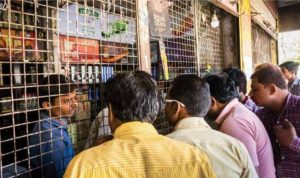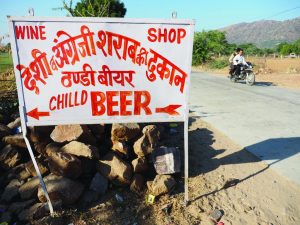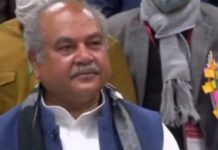 A latest national survey on the “Magnitude of Substance use in India” conducted by the prestigious All India Institute of Medical Sciences has found that one in every seven Indians is an alcohol consumer.
A latest national survey on the “Magnitude of Substance use in India” conducted by the prestigious All India Institute of Medical Sciences has found that one in every seven Indians is an alcohol consumer.
The survey, the first in the 15 years, finds that at the national level, about 14.6 per cent of people (among 10-75-year-old) are current users of alcohol, that is about 16 crore people. The current survey is very significant because the last National Survey on the extent, pattern, and trend of drug abuse were conducted way back in the year 2000-2001. The report was published in 2004 but was not considered comprehensive, as it did not state wise, region wise or area wise estimates.
Confirming the findings of the survey, Minister of Social Justice and Empowerment, Thaawarchand Gehlot observed that “Use of alcohol and illicit drugs has come to represent yet another danger for our country over the past few years. Of late, the menace of drug abuse in the younger generation has been rising all over the world and India is no exception to it”. Gehlot added that the survey involved interviews of more than 5 lakh individuals across all the 36 States and UTs of the country and use of multiple approaches to collect data.
The survey finds that prevalence is 17 times higher among men than women. It finds that among people consuming alcohol in India, Country liquor (‘desi’) (about 30 per cent) and spirits (IMFL — Indian Made Foreign Liquor) (about 30 per cent) are the predominantly consumed beverages.
The AIIMS survey finds that about 5.2 per cent of Indians (more than 5.7 crore people) are estimated to be affected by harmful or dependent alcohol use. In other words, every third alcohol user in India needs help for alcohol-related problems.
The states with the high prevalence of alcohol use are Chhattisgarh, Tripura, Punjab, Arunachal Pradesh, and Goa. The states with high prevalence (more than 10 per cent) of alcohol use disorders include Tripura, Andhra Pradesh, Punjab, Chhattisgarh, and Arunachal Pradesh.
 It finds that about 2.8 per cent of Indians (3.1 crore individuals) report having used any cannabis product within past 12 months (Bhang – 2 per cent or 2.2 crore people; Ganja/Charas – 1.2 per cent or 1.3 crore people). About 0.66 per cent of Indian (or approximately 72 lakh individuals) need help for their cannabis use problems. Though bhang use is more common than ganja/charas, the prevalence of harmful/dependent use is proportionately higher for ganja/charas users.
It finds that about 2.8 per cent of Indians (3.1 crore individuals) report having used any cannabis product within past 12 months (Bhang – 2 per cent or 2.2 crore people; Ganja/Charas – 1.2 per cent or 1.3 crore people). About 0.66 per cent of Indian (or approximately 72 lakh individuals) need help for their cannabis use problems. Though bhang use is more common than ganja/charas, the prevalence of harmful/dependent use is proportionately higher for ganja/charas users.
The states with the higher than national prevalence of cannabis use are Uttar Pradesh, Punjab, Sikkim, Chhattisgarh, and Delhi. In some states, the prevalence of cannabis use disorders is considerably higher (more than thrice) than the national average like Sikkim and Punjab.
At the national level, the most common opioid used is Heroin, (current use 1.14 per cent) followed by Pharmaceutical opioids (current use 0.96 per cent) and then Opium (current use 0.52 per cent). Prevalence of current use of opioids overall is 2.06 per cent and about 0.55 per cent of Indians are estimated to need help for their opioid use problems (harmful use and dependence). More people are dependent upon Heroin than Opium and Pharmaceutical Opioids.
Of the total estimated approximately 60 lakh people with opioid use disorders (harmful or dependent pattern) in the country, more than half are contributed by just a few states: Uttar Pradesh, Punjab, Haryana, Delhi, Maharashtra, Rajasthan, Andhra Pradesh, and Gujarat. In terms of percentage of population affected, the top states in the country are those in the northeast (Mizoram, Nagaland, Arunachal Pradesh, Sikkim, Manipur) along with Punjab, Haryana, and Delhi.
About 1.08 per cent of 10-75-year-old Indians (approximately 1.18 crore people) are current users of sedatives (non-medical, non-prescription use). The states with the highest prevalence of current Sedative use are Sikkim, Nagaland, Manipur, and Mizoram. However, Uttar Pradesh, Maharashtra, Punjab, Andhra Pradesh, and Gujarat are the top five states which house the largest populations of people using sedatives. Inhalants are the only category of substances for which the prevalence of current use among children and adolescents is higher (1.17 per cent) than adults (0.58 per cent).
At the national level, an estimated 4.6 lakh children and 18 lakh adults need help for their inhalant use (harmful use/dependence). In terms of absolute numbers, states with a high population of children needing help for inhalant use are Uttar Pradesh, Madhya Pradesh, Maharashtra, Delhi, and Haryana. Cocaine (0.10 per cent) Amphetamine Type Stimulants (0.18 per cent) and Hallucinogens (0.12 per cent) are the categories with the lowest prevalence of current use in India.
Nationally, it is estimated that there are about 8.5 Lakh People Who Inject Drugs (PWID). High numbers of PWID are estimated in Uttar Pradesh, Punjab, Delhi, Andhra Pradesh, Telangana, Haryana, Karnataka, Maharashtra, Manipur, and Nagaland. Opioid group of drugs is predominantly injected by PWID (heroin — 46 per cent and pharmaceutical opioids — 46 per cent). A substantial proportion of PWID reports risky injecting practices.
It may be recalled that last year, a bench headed by Chief Justice of India Dipak Misra had on July 16 directed the AIIMS to finalise the report by September 7, saying “no further extension shall be granted” and that the matter was “of national importance”. However, the AIIMS had sought more time from the Supreme Court to prepare a survey report on the extent and effects of drug abuse in India along with recommendations to combat the threat. The Court had granted AIIMS more time after it cited how the 30-crore survey, started in June 2016, had been taken over in September last year by the Union Ministry of Social Justice.
Advocate Sravan Kumar had moved the Supreme Court on a petition filed by Kethireddy Jagadishwar Reddy, seeking directions to the Centre to prepare an action plan and stricter laws providing for confiscation of drug peddlers’ properties and discouraging television and movies from portraying or drug use. He had placed in court data that showed that every day there were 10 drug or alcohol-related suicides in the country.
The National Drug Dependence Treatment Centre (NDDTC) of the All India Institute of Medical Sciences (AIIMS) has submitted the latest survey report, New Delhi submitted titled “Magnitude of Substance Use in India”. The Ministry of Social Justice and Empowerment sponsored the survey. A team of NDDTC led by Dr. Atul Ambekar conducted the Survey.
The AIIMS survey is considered very significant as it employs a combination of two data collection approaches. A Household Survey (HHS) was conducted among the representative, general population (10-75 years old) of all the 36 states and UTs of the country. This was aimed primarily at studying the use of common, legal substances (like Alcohol and Cannabis). At the national level, a total of 200,111 households were visited in 186 districts and a total of 473,569 individuals were interviewed. A Respondent Driven Sampling (RDS) survey along with multiplier approach was conducted in 123 districts among 70,293 people suffering from dependence on illicit drugs.
The way out
The AIIMS survey suggests that scientific evidence-based treatment needs to be made available for people with Substance use disorders. A conducive legal and policy environment is needed to help control drug problems as the report makes it evident that a sizable population in India is affected by substance use disorders and is in need of urgent help. The survey admits, “Reach of the national programmes for the treatment of substance use disorders is grossly inadequate”.
The survey also admits that the “evidence for the effectiveness of awareness generations as the predominant preventive strategy, is very weak. Prevention programmes must address the risk and protective factors aimed at not just preventing substance use but ensuring that young people grow and stay healthy into adulthood, enabling them to realize their potential and become productive members of their community and society”. It suggests that in view of the wide treatment gap (mismatch between demand and availability of treatment services) in the country, India needs massive investments in enhancing the avenues for treatment. Optimum allocation of resources for treatment of substance use disorders is imperative, based upon the evidence generated through this survey. Planning for a national level treatment programme must be guided by the absolute magnitude of the problem, for prioritization among the states.
Addiction treatment programmes focused heavily upon inpatient treatment/hospitalization in ‘de-addiction centres’ are unlikely to cater to the huge demand for treatment. Enhancing treatment services as outpatient clinics, which have all the necessary components (trained human resources, infrastructure, medicines and supplies, a system of monitoring and mentoring) is urgently required.











